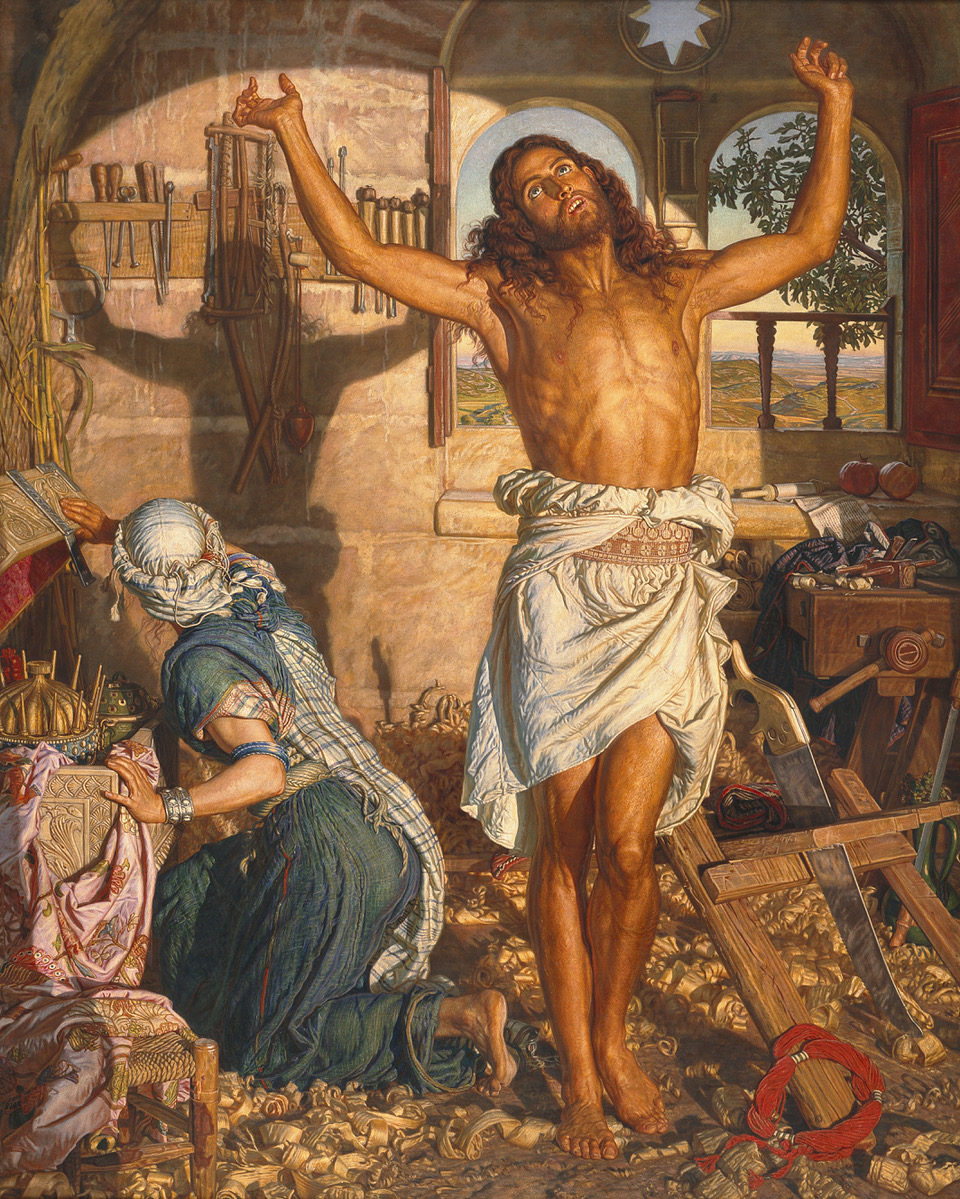
William Holman Hunt and the Racialization of Roberson’s Orange Vermilion in The Shadow of Death (1870-1873)
Colour Materiality
1870
The Pre-Raphaelite painter William Holman Hunt endured a famous episode with a tube of Roberson’s Orange Vermilion while completing work on The Shadow of Death (1870-1873). This pigment created in 1835 was commercialized from 1840 by Charles Roberson & Co who was awarded numerous medals at the Exhibitions of 1851 and 1862.
Hunt’s painting shows Christ stretching with exhaustion at the end of the day, throwing his shadow upon the wall behind him, in morbid anticipation of his crucifixion. Hunt selected Roberson’s Orange Vermilion for Christ’s flesh tones, which he had hoped ‘to be particularly delicate’. He also purchased Madder Carmine from the firm, as he noted a little pink was required ‘for fair flesh’.
Hunt was sensitive about the painting’s flesh tones after critics condemned his previous representations of Christ as too dark. His selection of Orange Vermilion and Madder Carmine (also purchased by Edward Burne-Jonesfrom 1857), both mixed with zinc white, he anticipated, should produce the effect of rugged, open-air labour performed beneath the sun of the Middle East, but avoiding the racialized implications of Christ appearing anything other than light-skinned.
However, upon application these colours rapidly dulled and darkened. Hunt described his dismay in various letters, writing ‘I was overwhelmed with confusion at seeing that all my flesh painting went black’ noting Christ’s face appeared ‘dirty and smeary’. Hunt’s pejorative description of these dark flesh tones reflects perceptions about the superiority of light skin that permeated the British imperial imagination, as the darkening of Christ’s skin simultaneously compromised the figure’s spiritual and racial purity for Hunt.
Hunt could not believe the fault was with the paint and assuming the error was with his technique, he continually scraped away and reapplied the paint in the hope the colour might not deteriorate. Eventually however, Hunt sent the Orange Vermilion for scientific analysis. His speculation that the paint was, in his words ‘adulterated with 10 per cent of villainy,’ was validated—although it proved to be 10 percent lead. This motivated him to investigate whether the madders had perhaps been laced with synthetic dyes. In a letter of 1875 Hunt wrote ‘I have strong reason to think that the Madders of the market are made of Coal-Tar. I am pursuing this now and won’t I come down like a thunderbolt upon the trade if I prove right!’ Hunt was indeed proved right about the presence of synthetic aniline dyes in Roberson’s madders, although it is unclear whether Roberson adulterated these colors, or if they received tainted materials from their wholesale suppliers. Nevertheless, Hunt began acquiring samples from every colourman in London to discover how widespread the problem of colour adulteration was, maintaining that only one manufacturer in London sold genuine madders, while the rest peddled fraudulent substitutes.
Bibliography
-
Coombs, James H. (ed.), A Pre-Raphaelite Friendship: The Correspondence of William Holman Hunt and John Lucas Tupper, Ann Arbor, MI: UMI Research Press, 1986.
-
Dootson, Kirsty Sinclair, The Rainbow’s Gravity: Colour, Materiality and British Modernity, London: Paul Mellon Centre for Studies in British Art, 2023, pp.28-32
-
Hunt, William Holman, ‘The Present System of Obtaining Materials in Use by Artist Painters, as Compared with That of the Old Masters’, The Journal of the Society of Arts 28, N°1431, 1880, pp. 473–502.
-
Le Gall, Shalini, ‘Evangelical Imperialism: Holman Hunt and Religious Painting in the Middle East’, PhD diss., Northwestern University, 2009.
-
Mann, Fiona, Brushing the surface: the Practice and critical reception of watercolour techniques in England 1850-1880, Vol.1, PhD diss., Oxford Brookes, 2011.